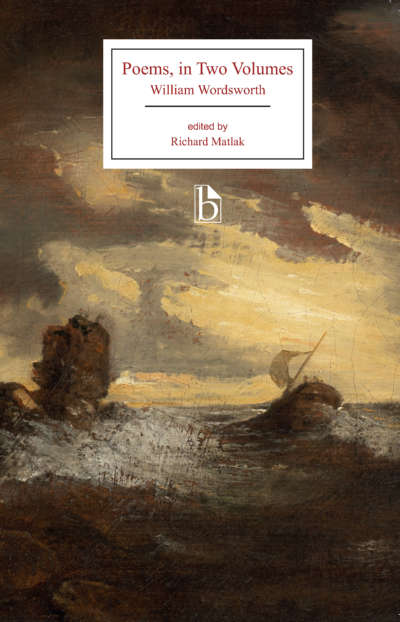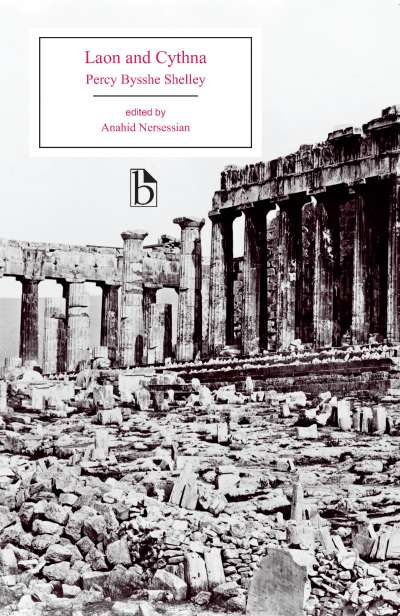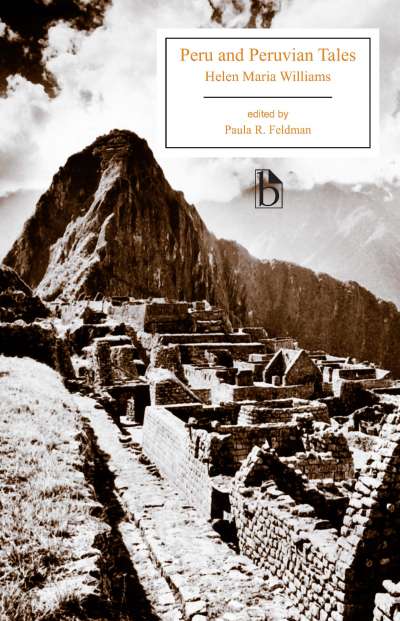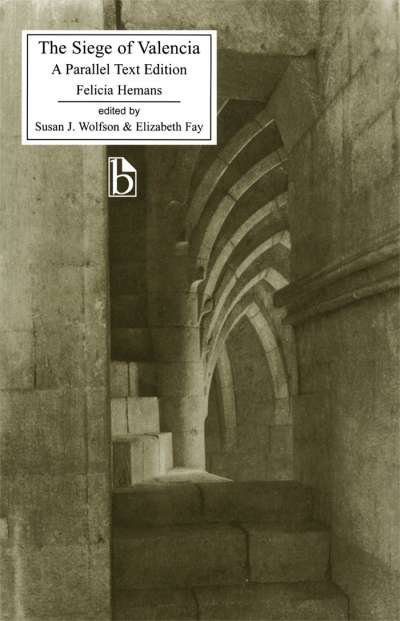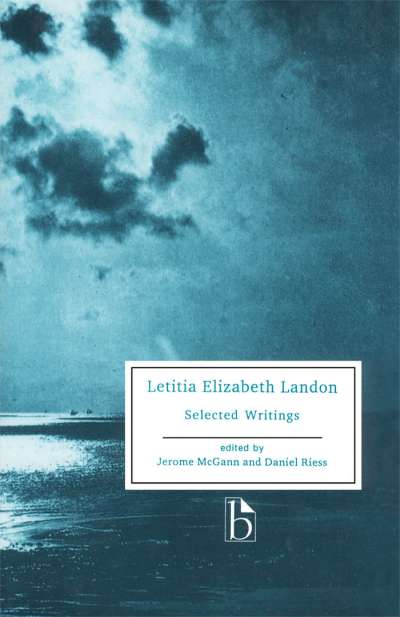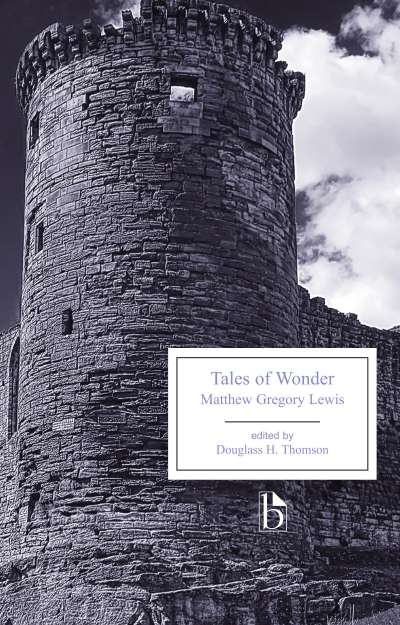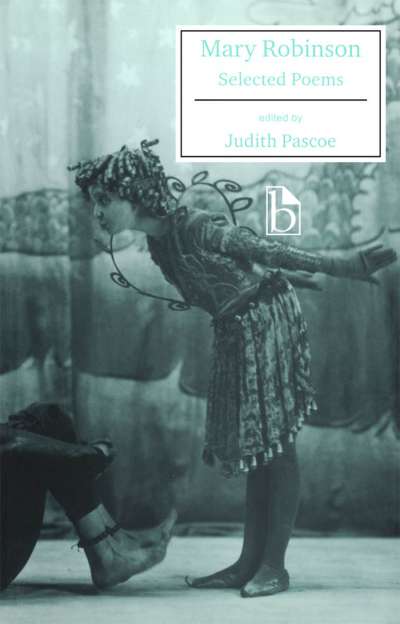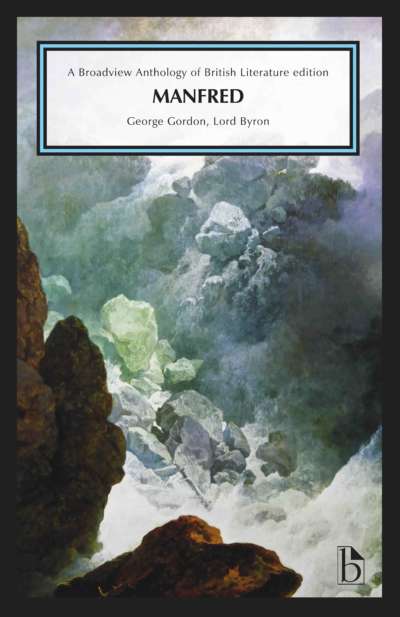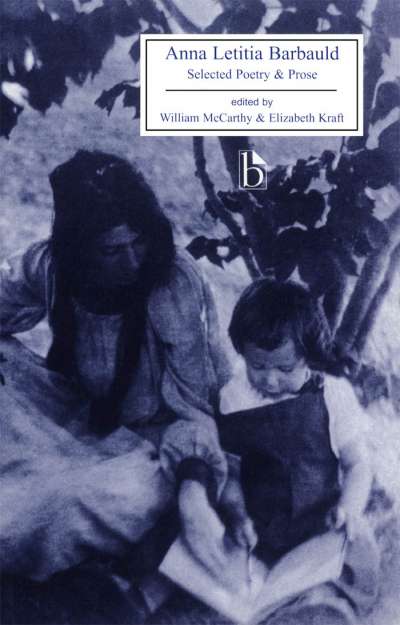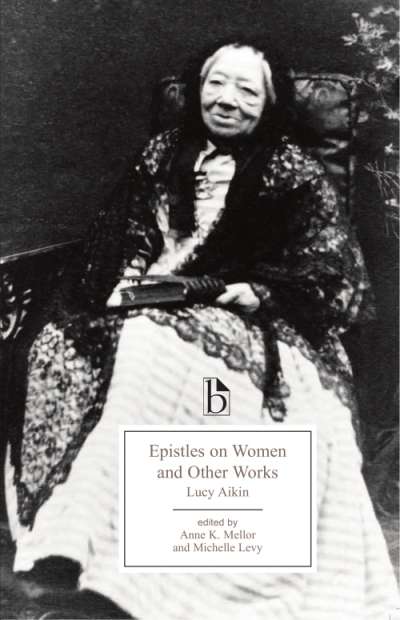Long central to the canon of British Romantic literature, Samuel Taylor Coleridge and William Wordsworth’s Lyrical Ballads is a fascinating case study in the history of poetry, publishing, and authorship. This Broadview edition is the first to reprint both the 1798 and the 1800 editions of Lyrical Ballads in their entirety.
In the appendices to this Broadview edition, reviews, correspondence, and a selection of contemporary verse and prose situate the work within the popular and experimental literature of its time, and allow readers to trace the work’s transformations in response to the pressures of the literary marketplace.
Comments
“Lyrical Ballads, the collection that, in many accounts, launched Romanticism, has often been reprinted, but never in a wholly satisfactory edition. ...Michael Gamer and Dahlia Porter, in yet another splendid Broadview edition, have provided the solution that scholars and students have longed for. This remarkable volume provides both the 1798 and 1800 volumes in full. But more than this; in eight appendices, they provide an astonishing wealth of extra material. ... This is a volume that will surely become a standard in the field, a vital tool in teaching and scholarship. ...[It is] more than one could possibly have hoped for.” — Year’s Work in English Studies (2010)
“An edition we’ve all been waiting for, as teachers and as scholars—containing more than one would have thought possible to include in one volume. Herein is all the contextual material one could wish for: reviews from periodicals, including Southey’s and Jeffrey’s famous articles; discussions in correspondence, including comments by Coleridge, Lamb, Southey and Dorothy Wordsworth; critical discussions from Biographia and “My First Acquaintance with Poets”; poetic sources by Burger, Charlotte Smith and Helen Maria Williams; verse responses by Southey, Mary Robinson; even a section detailing how the poems were rearranged in Wordsworth’s and Coleridge’s Collected Works. All this plus the texts of poems excluded from the 1798 and 1800 editions, a handy appendix plotting the poems’ locations on maps of Britain and the Lakes, and a magisterial introduction.” — Tim Fulford, Nottingham Trent University
Acknowledgements
Abbreviations
Illustrations
Introduction
William Wordsworth and Samuel Coleridge: A Chronology
A Note on the Text
Lyrical Ballads, 1798 Edition
Advertisement
“The Rime of the Ancyent Marinere”
“The Foster-Mother’s Tale, A Dramatic Fragment”
“Lines Left Upon a Seat in a Yew-Tree Which Stands Near the Lake of Esthwaite”
“The Nightingale, a Conversational Poem, Written in April, 1798”
“The Female Vagrant”
“Goody Blake, and Harry Gill, A True Story”
“Lines written at a small distance from my House, and sent by my little Boy to the person to whom they are
addressed”
“Simon Lee, the Old Huntsman”
“Anecdote for Fathers”
“We Are Seven”
“Lines Written in Early Spring”
“The Thorn”
“The Last of the Flock”
“The Dungeon”
“The Mad Mother”
“The Idiot Boy”
“Lines Written Near Richmond, upon the Thames, at Evening”
“Expostulation and Reply”
“The Tables Turned; an Evening Scene, on the Same Subject”
“Old Man Travelling; Animal Tranquillity and Decay, A Sketch”
“The Complaint of a Forsaken Indian Woman”
“The Convict”
“Lines Written a Few Miles above Tintern Abbey, on Revisiting the Banks of the Wye During a Tour, July 13,
1798”
Reviews of the 1798 Edition
- [Robert Southey], Critical Review (October 1798)
- Monthly Mirror (October 1798)
- Analytical Review (December 1798)
- New Annual Register for 1798 (1799)
- Monthly Magazine (January 1799)
- New London Review (January 1799)
- [Charles Burney], Monthly Review (June 1799)
- The British Critic (October 1799)
- Naval Chronicle (October and November 1799)
- Antijacobin Review (April 1800)
- [Daniel Stuart], Morning Post (April 1800)
- [Daniel Stuart], Courier (April 1800)
- [Daniel Stuart], Courier (June 1800)
- Portfolio (January 1801)
Lyrical Ballads, 1800 Edition
Volume I
Preface
“Expostulation and Reply”
“The Tables Turned; an Evening Scene, on the Same Subject”
“Animal Tranquillity & Decay, a Sketch”
“The Complaint of a Forsaken Indian Woman”
“The Last of the Flock”
“Lines Left upon a Seat in a Yew-Tree Which Stands Near the Lake of Esthwaite”
“The Foster-Mother’s Tale, A Narration in Dramatic Blank Verse”
“Goody Blake & Harry Gill, A True Story”
“The Thorn”
“We Are Seven”
“Anecdote for Fathers”
“Lines written at a small distance from my House, and sent by my little Boy to the Person to whom they are
addressed”
“The Female Vagrant”
“The Dungeon”
“Simon Lee, the Old Huntsman”
“Lines Written in early Spring”
“The Nightingale, Written in April, 1798”
“Lines Written when sailing in a Boat at Evening”
“Lines Written near Richmond upon the Thames”
“The Idiot Boy”
“Love”
“The Mad Mother”
“The Ancient Mariner, A Poet’s Reverie”
“Lines Written a Few Miles above Tintern Abbey, on Revisiting the banks of the Wye During a Tour, July 13,
1798”
Notes
Volume II
“Hart-Leap Well”
“There was a Boy”
“The Brothers, a Pastoral Poem”
“Ellen Irwin, or the Braes of Kirtle”
“Strange fits of passion I have known”
“Song”
“A slumber did my spirit seal”
“The Waterfall and the Eglantine”
“The Oak and the Broom, a Pastoral”
“Lucy Gray”
“The Idle Shepherd-Boys, or Dungeon-Gill Force, a Pastoral”
“’Tis said, that some have died for love”
“Poor Susan”
“Inscription for the Spot where the Hermitage stood on St. Herbert’s Island, Derwent-Water”
“Inscription for the House (an Out-house) on the Island at Grasmere”
“To a Sexton”
“Andrew Jones”
“The Two Thieves, or the last Stage of Avarice”
“A whirl-blast from behind the hill”
“Song for the Wandering Jew”
“Ruth”
“Lines Written with a Slate-pencil upon a Stone”
“Lines Written on a Tablet in a School”
“The Two April Mornings”
“The Fountain, a Conversation”
“Nutting”
“Three years she grew in sun and shower”
“The Pet-Lamb, a Pastoral”
“Written in Germany, On one of the coldest days of the Century”
“The Childless Father”
“The Old Cumberland Beggar, a Description”
“Rural Architecture”
“A Poet’s Epitaph”
“A Character, in the antithetical Manner”
“A Fragment”
“Poems on the Naming of Places”
“Michael, a Pastoral Poem”
Notes
Reviews of the 1800 Edition
- [John Stoddard], The British Critic (February 1801)
- Monthly Mirror (June 1801)
- Portfolio (June 1801)
- Portfolio (December 1801)
- American Review and Literary Journal (January 1802)
- Monthly Review (June 1802)
- [Francis Jeffrey], Edinburgh Review (October 1802)
- Edinburgh Magazine (July 1803)
Appendix A: Additions to the 1802 Edition of Lyrical Ballads
- William Wordsworth, Preface to Lyrical Ballads with Pastoral and other Poems (1802)
- William Wordsworth, “Appendix:—by what is usually called Poetic Diction” (1802)
Appendix B: Poems by Coleridge Originally Intended for Lyrical Ballads
- “Lewti, or the Circassian Love-Chant”
- “Introduction to the Tale of the Dark Ladie”
- “Christabel”
Appendix C: Correspondence about Lyrical Ballads
- Samuel Coleridge to Joseph Cottle (8 June 1797)
- Samuel Coleridge to Joseph Cottle (ca. 3 July 1797)
- Dorothy Wordsworth to Mary Hutchinson (ca. June 1797)
- Samuel Coleridge to Joseph Cottle (13 March 1798)
- Samuel Coleridge and William Wordsworth to Joseph Cottle (ca. 28 May 1798)
- William Wordsworth to Joseph Cottle (2 June 1799)
- Dorothy Wordsworth to Mrs. John Marshall (10 and 12 September 1800)
- Samuel Coleridge to Humphry Davy (9 October 1800)
- William Wordsworth to Charles James Fox (14 January 1801)
- Charles Lamb to William Wordsworth (30 January 1801)
- Charles Lamb to Thomas Manning (15 February 1801)
- William Wordsworth to Samuel Coleridge (early March 1801)
- Charles James Fox to William Wordsworth (25 May 1801)
- Robert Southey to Grosvenor Bedford (19 August 1801)
- Samuel Coleridge to William Sotheby (13 July 1802)
- Samuel Coleridge to Robert Southey (July 1802)
- Samuel Coleridge to Thomas Poole (14 October 1803)
Appendix D: Commentary on Lyrical Ballads
- From Samuel Coleridge, Biographia Literaria (1817)
- From William Hazlitt, “My First Acquaintance With Poets” (1823)
- From William Wordsworth, Notes Dictated to Isabella Fenwick (1857)
Appendix E: The Dispersal of Lyrical Ballads into the Collected
Works of Coleridge and Wordsworth
Appendix F: Prose Contemporaries
- From Joshua Reynolds, A Discourse, Delivered to the Students of the Royal Academy (1771)
- From James Beattie, Essays: On Poetry and Music, as they Affect the Mind (1776)
- From Erasmus Darwin, “Interlude I,” The Botanic Garden (1789)
- From George Dyer, Complaints of the Poor People of England (1793)
- From Erasmus Darwin, Zoönomia; or,The Laws of Organic Life (1794–96)
- From Joanna Baillie, “Introductory Discourse” to A Series of Plays (1798–1812)
- From Mary Wollstonecraft, “On Poetry” (1798)
- From Edmund Burke, Thoughts and Details on Scarcity (1800)
Appendix G: Verse Contemporaries
- From George Crabbe, The Village (1783)
- Charlotte Smith, “Sonnet III:To a Nightingale” (1784)
- From William Cowper, The Task (1785)
- Helen Maria Williams, “To Sensibility” (1786)
- [William Wordsworth], “Sonnet on seeing Miss Helen Maria Williams Weep at a Tale of Distress” (1787)
- From Erasmus Darwin, The Botanic Garden (1789)
- Gottfried August Bürger, “Lenora” (1796)
- Charlotte Smith, “Sonnet LXX: On being cautioned against walking on an headland overlooking the sea, because
it was frequented by a Lunatic” (1797)
- Robert Southey, “Inscription III. For a Cavern that overlooks the River Avon” (1797)
- From Joanna Baillie, De Monfort, a Tragedy (1798–1812)
- Robert Southey, “The Idiot” (1798)
- Thomas Beddoes, “Domiciliary Verses: December 1795” (1799)
- Robert Southey, “The Mad Woman” (1799)
- Robert Southey, “English Eclogues: Eclogue IV: The Sailor’s Mother” (1799)
- Mary Robinson, “The Haunted Beach” (1800)
Appendix H: Mapping the Poems
Select Bibliography
Michael Gamer is Associate Professor of English at the University of Pennsylvania and the co-editor of
The Broadview Anthology of Romantic Drama.
Dahlia Porter is Assistant Professor of English at Vanderbilt University.


